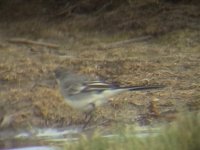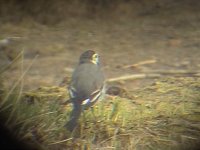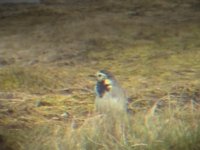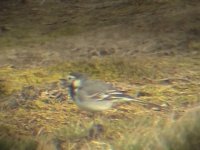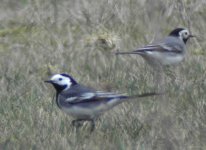Dear all,
I face this dilemma several times a year and 2005 is no exception - is this wagtail Pied or White? Initially I considered it a female White Wagtail because of the slightly darker than pale grey upperparts which have a slight contrast with the nape and crown. Then I started thinking of female Pied Wagtail and found myself seeing reasons why it could be either.
Can anyone offer any explanation why it should be Pied instead of White or vice versa? I'd be pleased to hear from you.
Thanks,
Lancey
I face this dilemma several times a year and 2005 is no exception - is this wagtail Pied or White? Initially I considered it a female White Wagtail because of the slightly darker than pale grey upperparts which have a slight contrast with the nape and crown. Then I started thinking of female Pied Wagtail and found myself seeing reasons why it could be either.
Can anyone offer any explanation why it should be Pied instead of White or vice versa? I'd be pleased to hear from you.
Thanks,
Lancey




